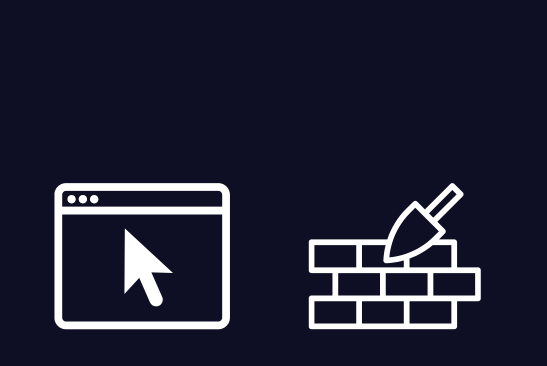The pros and cons of giving virtual estimates as a contractor
Read time – 8 minutes
Virtual services have become normal for most people in America. Doctors are doing telehealth, counseling sessions are done online, and fitness coaches are yelling at clients virtually; I even took Spanish tutoring lessons over Zoom video call for 2 months last year. It is everywhere you look in almost every industry.
Home services is different though. A plumber can’t fix a sink over a video call. However, the plumber could try to diagnose the issue and give a price to repair.
Thus virtual estimates will become more and more relevant as time goes on.
The big virtual estimating questions for home services are:
- Can your industry give pricing virtually (by virtually I mean over video call so one can visually see the potential job)?
- How to give virtual estimates and how to give them well?
- How can you give virtual estimates to make sure jobs are profitable and potential client disagreements are avoided ahead of time?
Before we get into that, let’s discuss the pros and cons of virtual estimates for clients and contractors.
Virtual Estimate Pros and Cons For Potential Clients
Pros
- Saves Time and Hassle
- No need to schedule multiple in-person meetings or wait for a contractor to arrive.
- The estimate can often be done quickly, even during non-traditional hours.
- Greater Convenience
- You can walk through your space or show relevant areas from the comfort of your home.
- Allows you to more easily fit an estimate into a busy schedule (e.g., lunch break, after hours).
- Access to More Options
- You can consult with specialists outside your immediate geographic area.
- This might increase your chances of finding the best price or a niche service.
Cons
- Potential for Inaccurate Estimates
- Not all details are visible on camera; hidden issues (e.g., behind walls) might be missed.
- The final cost may change after an on-site inspection reveals more information.
- Technical Difficulties
- Poor video quality or connectivity issues can hamper communication.
- Some homeowners may find it challenging to capture the right angles or detail areas properly.
- Limited Personal Connection
- A virtual call can feel more transactional than an in-person meeting.
- Less opportunity for the contractor to “sense” the client’s style, needs, or concerns beyond what’s shown on video.
Virtual Estimate Pros and Cons For Contractors
Pros
- Efficiency and Cost Savings
- Fewer site visits can reduce travel time and fuel costs.
- You can handle more inquiries and consultations in a single day.
- Wider Geographic Reach
- Ability to serve clients outside your local area by quickly seeing over a video call if the job is “worth it.”
- Expands your potential customer base, especially for specialized or niche services.
- Quickly qualify people re: budget/timeline/scope.
- Example: Flooring contractor – virtual estimate
- The homeowner shows them one scratch in the wood flooring of one room
- The contractor tells the client it is best to refinish the whole room so the whole floor blends and matches. the estimate is $1500 – The potential client says, “Oh, it’s not that serious; I was only looking to spend $300.” each party moves on, and it only took 3 minutes and no travel time. That person may remember the contractor’s honesty and call them back later.
Cons
- Risk of Under/Over Estimating
- Relying on photos or video tours alone, you may miss hidden damage or complexities.
- If the final scope differs from the virtual assessment, costs and schedules may need renegotiation.
- Additional Client Education Needed
- You may spend extra time teaching clients how to take photos, record videos, or measure spaces accurately.
- Inconsistent or low-quality visuals can force follow-up calls or in-person visits.
- Less Hands-On Interaction
- Harder to build rapport or trust as effectively as you might in person.
- Visual cues and the on-site “feel” of a job are limited when you’re seeing only what the client shows you.
Best industries for virtual estimates:
1. Interior & Exterior Painting
- Why It Works:
- Clients can show wall/ceiling conditions, room dimensions, and any repairs needed (e.g., holes, cracks).
- Painters can typically estimate based on size, furnishings, color choices, ceiling height, and prep work.
2. Cleaning & Maid Services
- Why It Works:
- Pricing often done by day (or hours) and depends on the number of rooms, square footage, and the level of cleaning required.
- Virtual walk-throughs let the cleaner see clutter, surfaces, and special requests (e.g., deep cleaning appliances).
3. Landscaping & Lawn Care
- Why It Works:
- A quick video tour of the yard, plus rough dimensions, is usually enough to gauge complexity.
- Many landscapers use standard per-square-foot or per-service rates (mowing, trimming, mulching, etc.).
4. Window Cleaning
- Why It Works:
- Clients can count windows, show accessibility (e.g., single-story vs. multi-story), and describe special considerations like skylights or storm windows.
- Pricing often follows a per-window or per-panel rate.
5. Roofing & Gutter Services
- Why It Works:
- Contractors can use aerial imagery (Google Maps) to estimate roof area and pitch.
- Clients can share videos of trouble spots (e.g., leaks, damaged shingles) for more context.
- Contractors can find house/roof sizes online in publicly listed property records.
6. Pest Control
- Why It Works:
- A virtual walkthrough can help show the extent of infestation or entry points.
- Many treatments follow typical pricing tiers (e.g., size of home, type of pest, frequency of service).
7. Handyman & Minor Repairs
- Why It Works:
- If the job is fairly straightforward (e.g., patching drywall, fixing door hinges), a quick video of the issue often suffices for a ballpark quote.
- Handy professionals can rely on experience with similar tasks to gauge labor time and materials.
8. HVAC Maintenance or Tune-Ups
- Why It Works:
- For basic maintenance or tune-ups, technicians can visually confirm unit type/size and ask about age or known issues.
- Detailed repairs might require on-site diagnosis, but initial quotes can still be fairly accurate virtually.
9. Flooring (Installation or Refinishing)
- Why It Works:
- Clients can share room dimensions and show floor conditions (e.g., damage, subfloor type).
- Estimates can be based on per-square-foot rates for materials and labor.
10. Interior Design or Home Staging
- Why It Works:
- Designers can see the layout and existing furniture via video call.
- They can create mood boards or digital mock-ups and quote based on the scope (e.g., single-room refresh vs. whole-home project).
Best Practices for Virtual Estimates in Home Services
- Request Measurements or Floor Plans:
- Encourage clients to share approximate dimensions or existing floor plans.
- Even rough measurements help refine labor and material estimates.
- Use Video Calls & Photographs Together:
- During a live virtual walk-through, prompt the client to zoom in on any key areas or damage.
- Have them upload or email additional photos for clarity.
- Offer a Price Range & Final Verification:
- Provide an initial range after the virtual consultation.
- Let clients know if a quick on-site visit is recommended to confirm final pricing—especially for hidden or structural issues.
- Provide Clear Next Steps & Disclaimers:
- Outline exactly what’s included and highlight potential unknowns (e.g., termite damage inside walls).
- This transparency builds trust and prevents surprises later.
COVER YOUR ASS
Reiterating point 3 above – I highly recommend offering a price range during the virtual estimate so you avoid committing to a fixed amount and potentially facing conflicts later.
Example: You’re hired to install 1 door. You tell the client over a video call the price is $400.
You show up the next day to do the job only to realize the client doesn’t have hinges.
The door also needs the hinges cut out, which requires a router that you do not own. Uh-oh
Now, you must tell the client the job costs more because you need to buy the hinges and router to complete the job. Also, you tell the client you need to bill more time because you have to leave the job and go get the items.
The client may be understanding, or they may say we had a deal that said door installation was priced all-in, which can lead to disagreement, loss of money, or time.
Get ahead of that. If the service is low-end price-wise and you plan to give service directly after pricing over video call, SEND A WRITTEN ESTIMATE WITH CONDITIONS!
Examples of conditions to include or consider in the written estimate:
- Materials are not included in this estimate. They are billed to the client at the end of the service/project.
- The estimated price is based on __ hours of work. If work exceeds __ hours, each additional hour is billed at $___/hour
Bottom line
As technology advances, people expect virtual estimates and booking in more and more industries. Savvy home contractors are taking advantage of this to reach, qualify, and close more potential clients.
If you are new to virtual estimates – start small:
- Block off 4 hours one day a week solely to give virtual estimates.
- Set up a scheduling tool like Calendly so people can book virtual estimates seamlessly ( we will discuss this part more next week)
- Make a list of the most important questions you need answered to give a price estimate.
- Give people a price range – don’t commit to a price solely from one video call.
- CYA (Cover your ass) by sending them a written estimate with the items that may change the final price (ie. materials, unexpected repairs unable to see via video.) If needed, perform a site visit before the work starts to finalize pricing and scope details.








